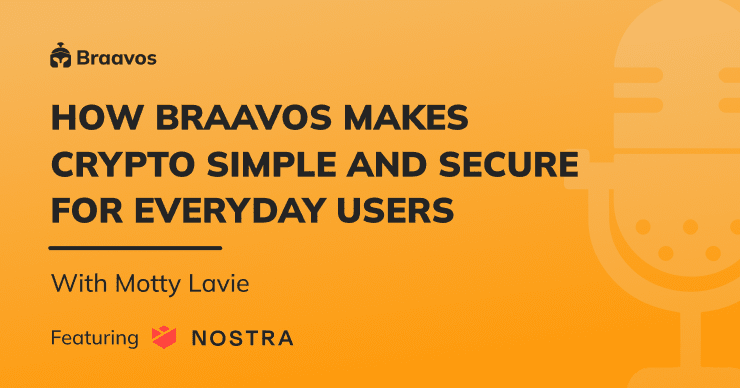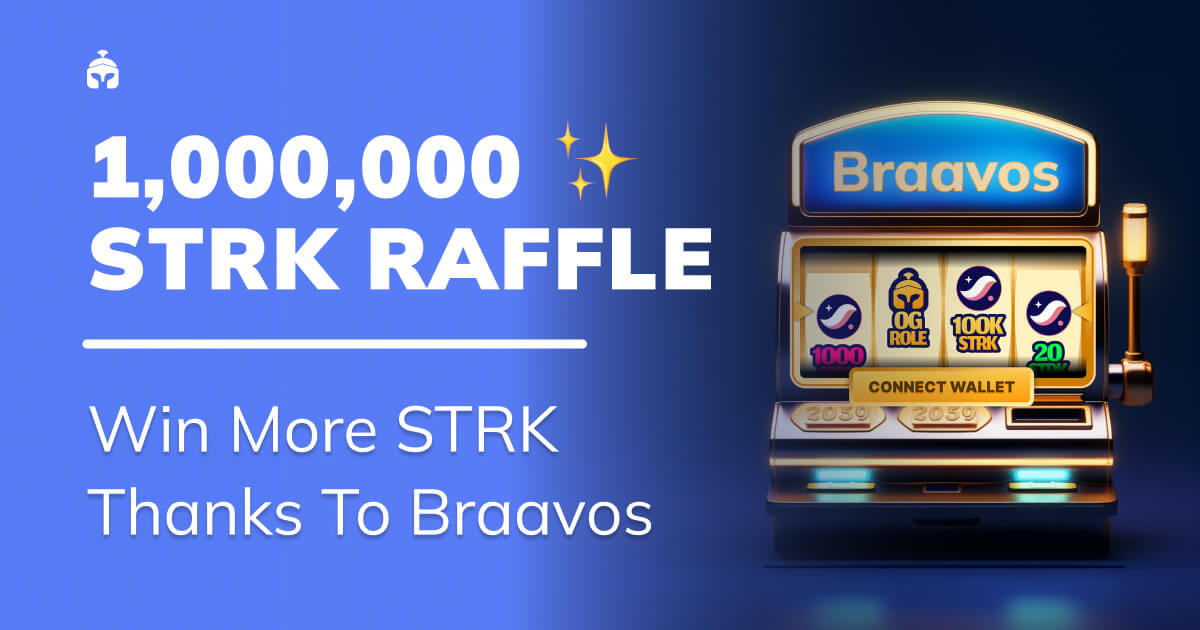Simplifying Crypto for Everyday Users: Braavos’ Mission to Provide Secure Access to Digital Assets
Discover Braavos' mission to simplify crypto access and increase security. Learn how they're bringing digital assets to the masses!

Meet Motty Lavie, Braavos’ Founder and CEO for a series of Q&A that clarify StarkNet tech opportunities, market evolution, and more! You can find the replay on Youtube. The recap was edited for length and clarity.
Q: Could you tell us more about Braavos and its background, Motty?
Of course! The team behind Braavos entered the crypto space relatively late, about a year and a half ago. However, we have been involved with StarkNet from the early days, when only a few teams were working on it. To provide some context, Braavos is the second protocol we launched on StarkNet. The first one, mySwap, was more of an educational project, but it became the first DeFi app to launch on StarkNet earlier this year.
We created Braavos after the successful launch of mySwap, when we realized the untapped potential of smart-contract-based wallets and the unique opportunities offered by StarkNet. Our goal with Braavos is to provide a feature-rich and economically viable smart contract wallet that brings the mass market into crypto, with a user experience that is similar to Web2 and without the problems and hurdles faced in the crypto space today.
Our wallet is available on all browsers and is the first and only mobile wallet for StarkNet. We have been gaining momentum every day and every week, with a growing user base from all over the globe.
Q: When did you start developing Braavos?
We took our time to examine the entire crypto ecosystem, understand what crypto is, and the benefits, advantages, and disadvantages of different L1s and L2s. We started with mySwap, deployed in January 2022, while work on Braavos began in March of the same year. In the past six months, we have brought new features to StarkNet’s ecosystem that didn’t exist before the wallet’s launch, such as:
- support for multiple browsers,
- NFT built-in support,
- mobile support for Android and iOS,
- built-in swap mechanism.
Q: What does the team look like, and who are the users of Braavos?
We are a lean team of six highly technical all-around players. We don’t have analytics on the wallet as an ideological decision to prevent security breaches. However, we do know that there are users from multiple countries, with the biggest communities being from the US, Turkey, Russia, and China. We also have users from Australia, Latin America, and Central Europe.
The end-users come from all over, with more and more users downloading the wallet and returning to use StarkNet.
Q: What led you to choose StarkNet? Were there any particular features?
StarkNet’s technology is very exciting, as it addresses critical problems such as Ethereum’s scalability. Though we may feel its limitations less in a bear market, it will have a significant impact in the next bull market, even more than in 2021.
After studying the crypto space and various L1 blockchains, we decided to use Ethereum because of its:
- reach and mature ecosystem
- existing network effect
- core values
Ethereum is the leading L1 blockchain of today and the future, prioritizing security and decentralization but sacrificing scalability, which led to high ETH gas fees during the last bull run.
To solve scalability issues, we opted for roll-ups, specifically ZK roll-ups, which we believe are the right long-term solution. We consider StarkNet the most promising and battle-tested technology using ZK roll-ups. Before launching StarkNet, the Starkware team created the StarkEx solution, which secures billions of dollars of assets for big names such as Sorare, DyDX, and ImmutableX.
We are confident that StarkNet’s ZK roll-ups are the superior technology, and we are excited to help drive the ecosystem forward.
Q: What are your thoughts about the state of StarkNet/Cairo tooling today, what do you think is missing?
We were initially concerned that StarkNet isn’t EVM-compatible and that it uses a new programming language invented for StarkNet, Cairo.
Writing in Cairo in the early days was challenging, as it lacked some basic programming functionalities that mature languages have. Debugging was also difficult, starting from obscure error messages and leading to reverse engineering to identify the issue.
However, we are encouraged by the tremendous improvement we’ve seen in the past 9-10 months in terms of the number of teams onboarding, the development of the Cairo language and supporting libraries, various tools for working with the network and analyzing transactions, and software development kits (SDKs). There is still much work to be done, but the vector of progress is moving in the right direction and at the right speed, gaining momentum each week.
Q: Account Abstraction has gained popularity in the StarkNet community and other projects. What are your thoughts on its potential?
Account Abstraction means that your wallet exists partly on-chain (i.e. Your wallet is a Smart Contract), opens a wide range of capabilities in terms of security and UX. Your private key is the only entity authorized to interact with the smart contact on-chain, with the possibility of creating other keys for various scenarios.
Note: What is Account Abstraction?
Account Abstraction is a first class citizen on StarkNet and in fact it’s the only way to communicate with other protocols on the network — every transaction must go through an account smart contract.
I think that Account Abstraction and Smart Contract wallets in general are the most underestimated thing in Crypto.
It can bring better security in tandem with a much better UX.
It’s going to be a real revolution in the (Web3) space.
In a few short weeks, we will release quite a few “smart contract native features”. These will enhance the wallet security with no additional hardware needed and the user experience, where users won’t lose their funds if they make a simple mistake.
I believe the complex and taxing environment is what keeps many people away from crypto today. And even if they have cryptocurrencies, they use centralized solutions.
Our goal is to make the decentralized and self custodial solution as easy to use as what people get from centralized solutions without sacrificing crypto core values — self-custody and decentralization. This can be accomplished through Account Abstraction and recent progress in ZK proofs.
This will allow for better security and smoother user experience:
- Native 2 Factor Authentication (2FA)
- Social recovery (with trusted people and no seed phrases)
- Controlling your allowances to dApps (how much assets dApps can use & for how long)
- Tailoring accounts according to each user’s needs.
All while remaining completely decentralized.
We want to remove the burden and the stress around self-custody from the user’s shoulders and use technology in order to give the same experience with the same or better security but completely self-custodial and decentralized.
To learn more on what we do and take part in the early Braavos revolution, I recommend you join us over on Braavos’ Discord or on Twitter.
You can also set up your Braavos wallet on Chrome, Android, iOS and more.
Or swap and stake tokens on mySwap.
Thanks again to Nostra for the exciting interview. If you don’t know, they’re designing the first StarkNet native stablecoin, as well as building a lending and borrowing dApp with several innovative features. Check out more of what they do over here.



